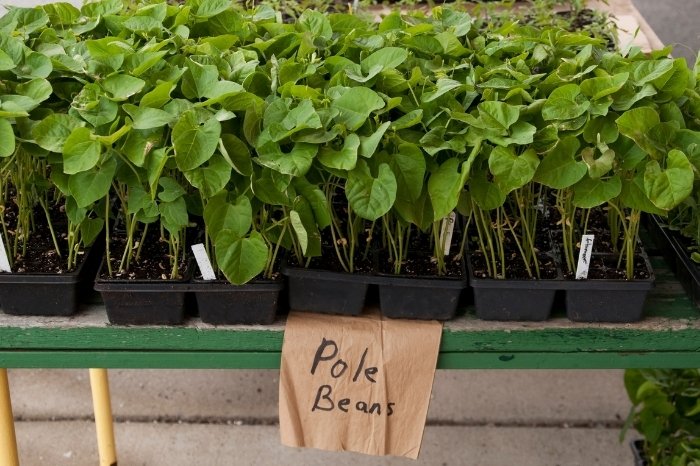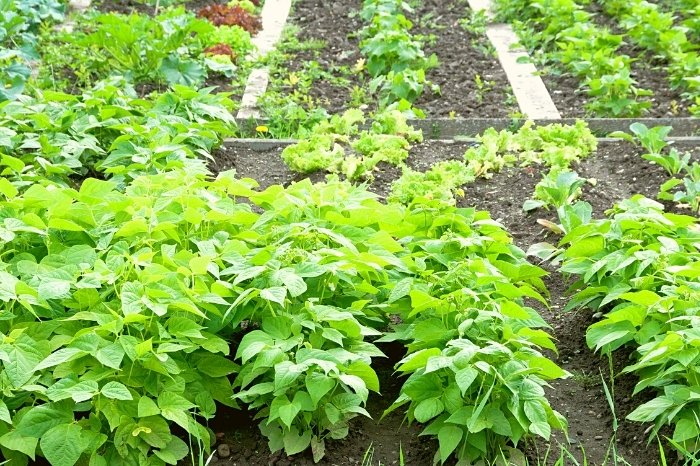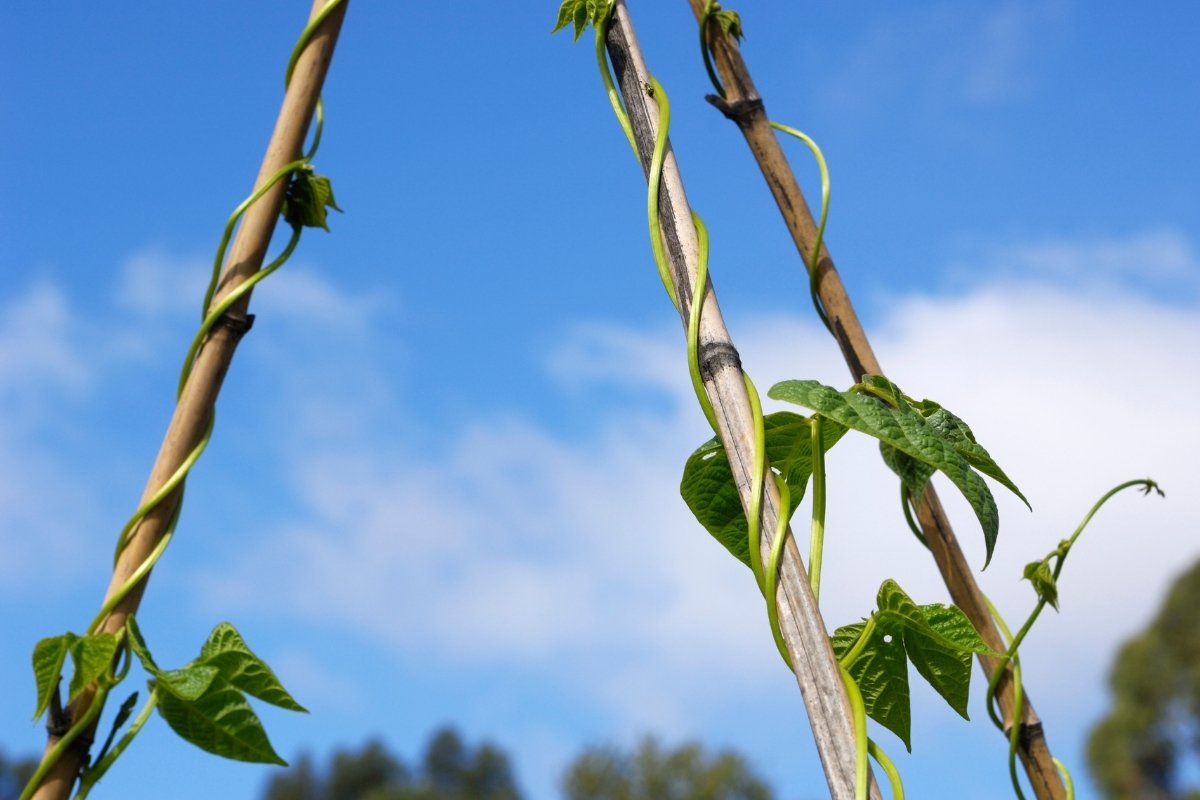Last Updated on January 13, 2022 by Cristina
When working with limited garden space, compact vegetables like beans are your best option, but how tall do pole beans grow? Beans can grow in two ways, runner or pole beans, and bush beans. Different varieties of green beans grow in a pole or bush style, so you have to research what suits your taste and garden space.
Most of these varieties require the same growing conditions, so you can experiment with both styles. Let’s dive into the details.
Pole Beans – What Are They?
Pole beans are essentially varieties of green beans that grow relatively tall. As a result, they’re ideal for more extensive gardens and gardeners who want bigger yields.
Pole beans can grow from 6 to 12 feet tall and need almost 60 days to mature. They yield a new harvest every 10 to 15 days and produce well into fall. One pole bean plant can produce a few pounds of beans per season.
An older gardener might prefer pole beans to bush beans because of their harvesting method. There is no need to bend for an hour picking out beans since they grow upright. Popular varieties of pole beans include Blue Lake Pole, Scarlet Runner, and Kentucky Blue.

Best Place To Grow Pole Beans
Pole beans seeds need to be sowed into the ground after the last frost when temperatures rise between 50 and 60°F. They need rich, well-draining, slightly moist soil with a pH value of around 6. A sunny spot is the best choice as the beans require at least 8 hours of sunlight each day.
Beans are known to fix the soil’s nitrogen, so fertilization is optional. If you decide to fertilize, do it in the middle of the producing season to boost future harvests.
Read more about A Compilation Of Plants That Keep Ants Away
What Beans Are More Compact?
Bush beans are better for smaller gardens as they grow in bunches and don’t need additional support.
They mature in 40 to 60 days, much faster than pole beans but produce one single harvest throughout the season. In 10 to 14 days, you’ll harvest all the beans for the season, and the plant will die.
They’re the perfect choice when you want a vegetable that grows and produces faster. Or if you want to free up the space for a late summer planting. Bush beans enrich the soil so it would be great for anything you decide to plant in the same spot later on.
The downside of bush beans is their fragility. While pole beans are much more resistant, bush beans are more susceptible to pests and diseases. The most popular bush beans varieties are Classic Snap, Yellow Podded, Blue Lake Bush, Romano, and Masai.

How To Grow Bush Beans
Bush beans need rich soil, so it’s best to work in some compost or aged manure into it before sowing. You can soak the seeds 24 hours before planting to speed up germination. Plant each plant 6 inches apart and leave 18 inches distance between each row.
Bush beans need full sun, well-draining soil, and regular watering. You can add mulch to retain some moisture and prevent weeds from growing around the beans. Monitor the beans frequently for occasional pests or signs of disease.
How Tall Do Bush Beans Grow?
Bush beans grow up to 2 feet tall. But this is the case when you provide the optimal conditions. If you decide to start the beans inside, they tend to grow taller.
If the bush beans don’t receive enough sunlight, they can grow taller. This is an instinct as they’re looking for more sun. Adding nitrogen-rich fertilizer can also lead to taller bush beans. Like every other bean, the bush beans are nitrogen fixers. They take the nitrogen from the air and transfer it into the soil. So manually adding more nitrogen can cause the plant to react.
Can You Control The Bush Beans Height?
Bush beans originate from pole beans, so there’s a tendency for them to lookalike. The best thing you can do to control the height of the bush beans is to plant them in the correct spot in your garden. Don’t add nitrogen fertilizers and water them regularly. Pinch the top of the beans to encourage spreading out instead of growing upwards.
Sow Right Seeds – Tri Color Bush Bean Seed Collection for Planting
If you notice your plants are growing over 2 feet after all these tips, detect how much sun they’re getting. Maybe there’s too much shade in the afternoon.
Do Bush Beans Need Trellis?
You don’t need to provide any support for bush beans. They grow compact, sturdy, and don’t need any frame or trellis. There’s little chance of the plant tumbling.
Pole Bean Vs Bush Bean Height
Pole beans are significantly taller, with 10 feet more than bush beans. But they’re closely connected, as bush beans are developed from pole beans. If you have the space, we recommend trying to grow pole beans. They’re hardy, disease-resistant, and produce so much during the season.
But if your garden space is limited, bush beans will work great. They both require identical growing conditions, so it’s genuinely a matter of preference and space. In addition, both growing styles are available in several different bean varieties.
Check Out What Does It Mean When There Are Lots Of Dragonflies
When It Comes To Taste, Which Is Better?
Pole and bush are growing styles, not varieties of beans. So to determine which tastes better, you have to compare a variety of bush beans to a variety of pole beans. There are tasty and not-so-tasty varieties in both styles.
There’s a popular claim that the taste of pole beans varieties is far superior to that of bush beans. But generally, they’re both starchy, crisp, and sweet.
Final Say: How Tall Do Pole Beans Grow
Pole beans are several bean varieties that tend to grow extremely tall, reaching 12 feet. They’re best grown in spacious gardens with trellis or frames provided for support. Pole beans produce several big yields throughout the season but take a lot of time to mature.
Their opposite is bush beans. They’re compact, grow significantly shorter up to 2 feet, and can be planted in smaller spaces. They produce a single harvest but mature faster.
Both growing styles suit different gardens and taste buds, so it’s best to explore which one you can accommodate in your garden.
Mary is a passionate gardener who loves spending her days getting her hands dirty and nurturing her plants. She‘s an avid reader of gardening magazines and is always looking for new ways to make her garden thrive. When not outside tending to her plants, Mary can be found inside reading up on the latest gardening trends, comparing notes with fellow gardeners, and finding the perfect pottery planter for her next planting project.



